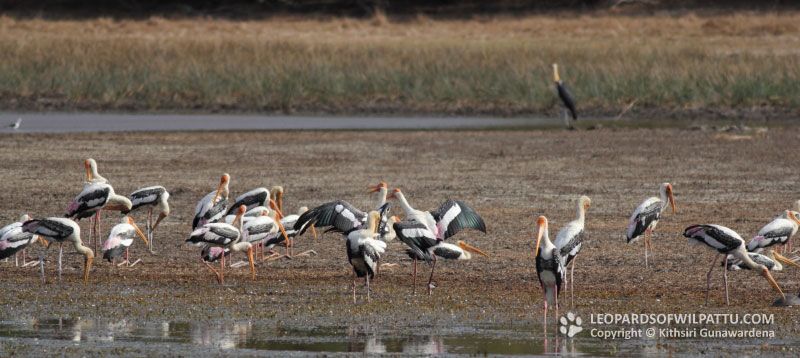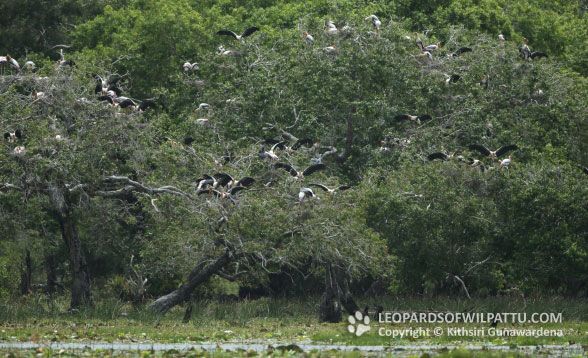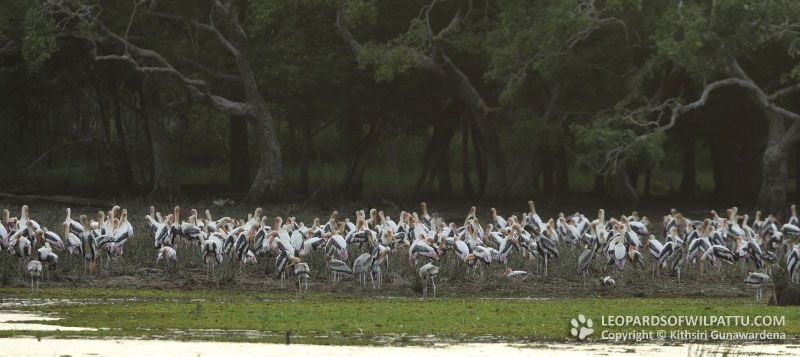
Birds ‹‹ Go Back
This beautiful stork is a breeding resident in most of our dry zone National Parks. However birds from the free flying colony at the Dehiwala zoological gardens have now increased in number and established them selves well in and around the city of Colombo in the wet zone where they were never recorded a few decades ago. These birds are now commonly seen even at the Beira Basin in the heart of the city and in marshes and paddy fields around Colombo such as Thalangama, Kotte and Attidiya. They are often seen flying over or circling with the thermals above the City of Colombo. This species is widely distributed in Asia. They are found south of the Himalayan range towards the Indus river system and towards the east in to Southeast Asia. This is essentially a bird of the lowland open water bodies and is not found in the higher hills or in dense forests.
The Global Conservation status of this species is regarded as Near Threatened. However the national conservation status of the species under reference is regarded as Least Concerned (National Red List 2012). The Painted Stork is a species protected under the Fauna and Flora Protection Ordinance as amended by Act No. 22 of 2009.
These birds have an interesting method of feeding. They would walk in shallow water with their open mandibles submerged in the water and would every now and then disturb the mud with one foot to flush out prey towards the open mandibles. If any prey is detected the mandibles will snap shut trapping the luckless animal that would be swallowed. I have observed this species in most dry zone national parks such as Yala, Udawalawa, Bundala, Maduruoya, Wasgomuwa, Lunugamvehera, Somawathiya, and Gal Oya national park. The highest altitude at which I have seen this bird is at Lahugala at 201m. These birds breed in mixed breeding colonies with other water –birds. Even though the adult birds are voiceless the young birds, as Henry puts it, make a wheezy croak which is quite loud that can be heard quite a distance from a breeding colony. I have observed the breeding colonies of this species at many locations including the Giants Tank in Murunkan, Mau Ara at Udawalawa National Park, at Lunugamvehera National Park and at Anawilundawa Sanctuary.
In Wilpattu the breeding colony of the Painted Storks across the Maradanmaduwa Tank becomes quite active and noisy during the first half of the year. The adults, as depicted in the photo above, would often extend their wings to shelter nestlings during the mid day heat. Young birds can be observed from end June up till end September in the dried up tank shore following the parents with half extended wings begging for food. During these dry months large numbers of these birds (some times up to about 400 birds) gather at the Maradanmaduwa Tank. Borupan Wila is another location in the park where these birds are usually seen during the dry season.



